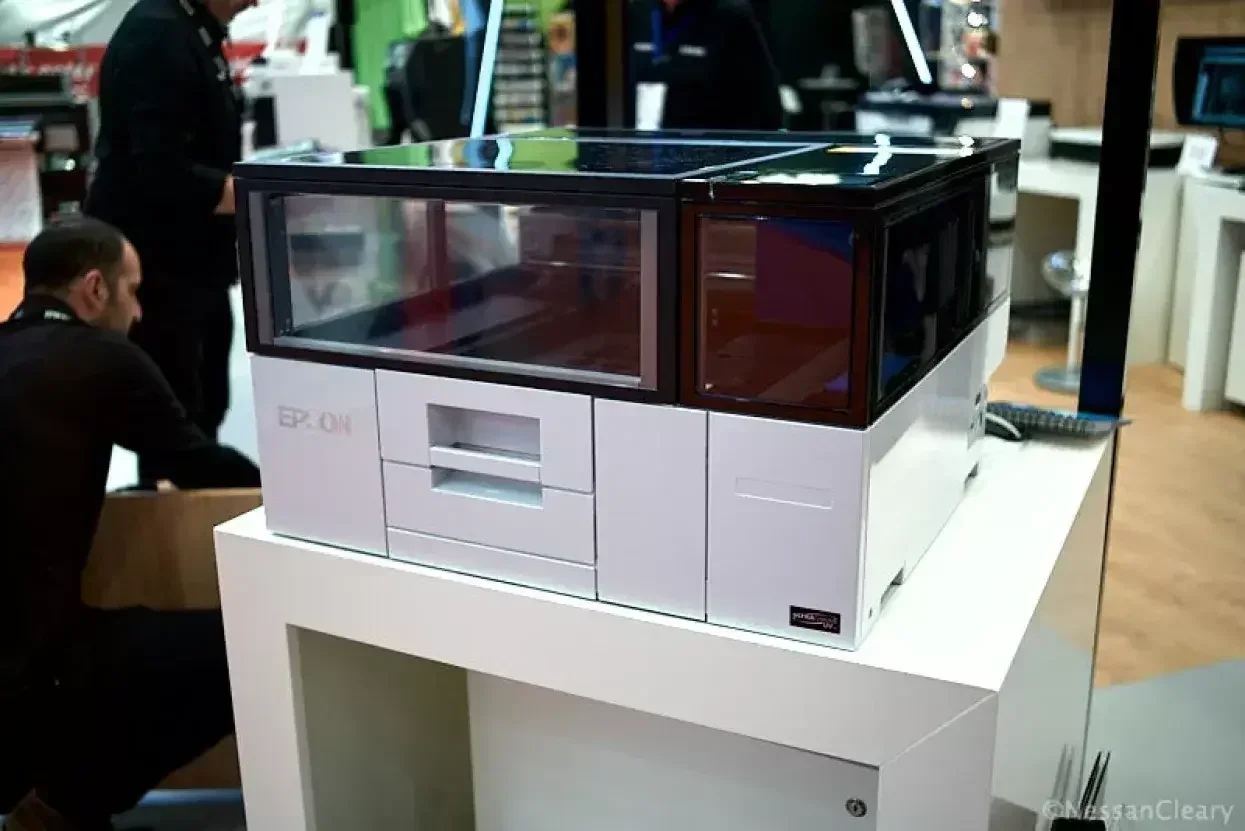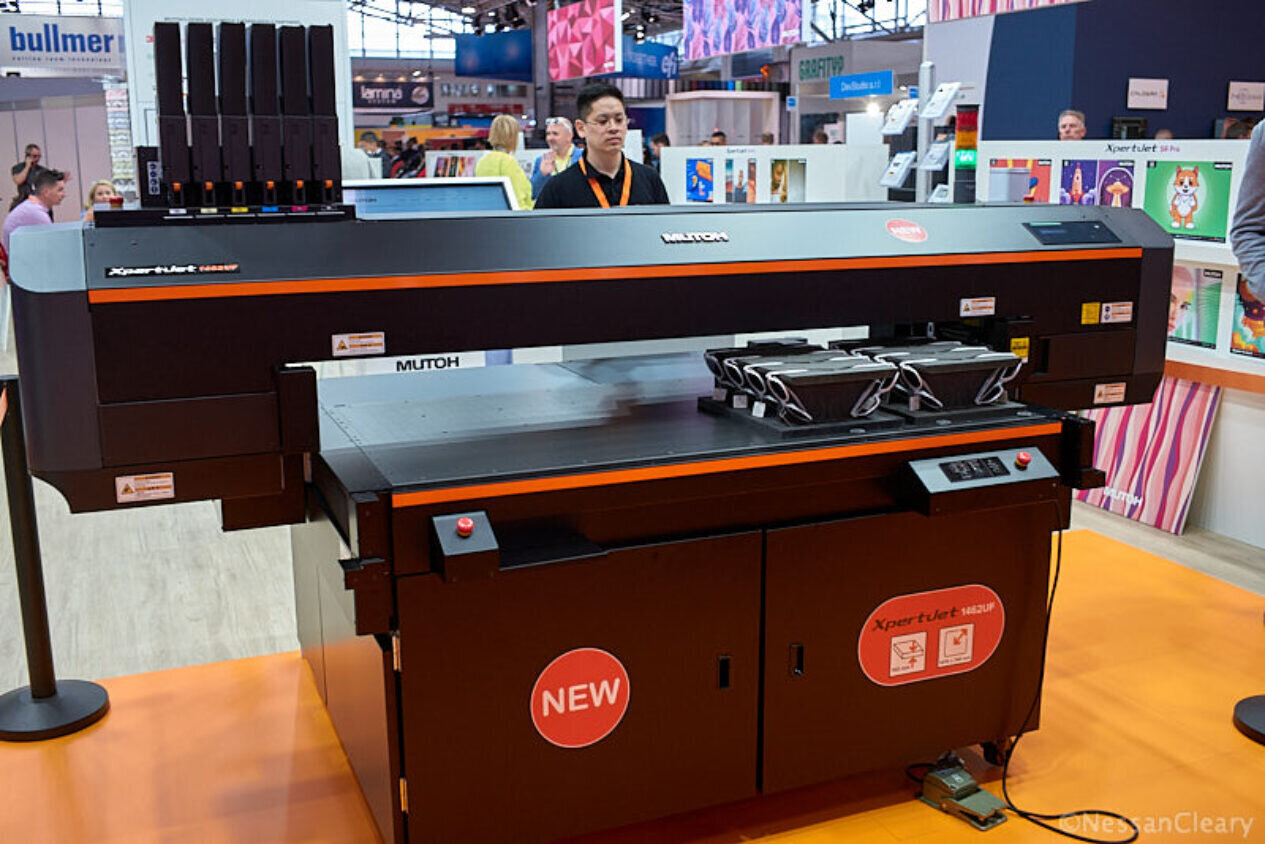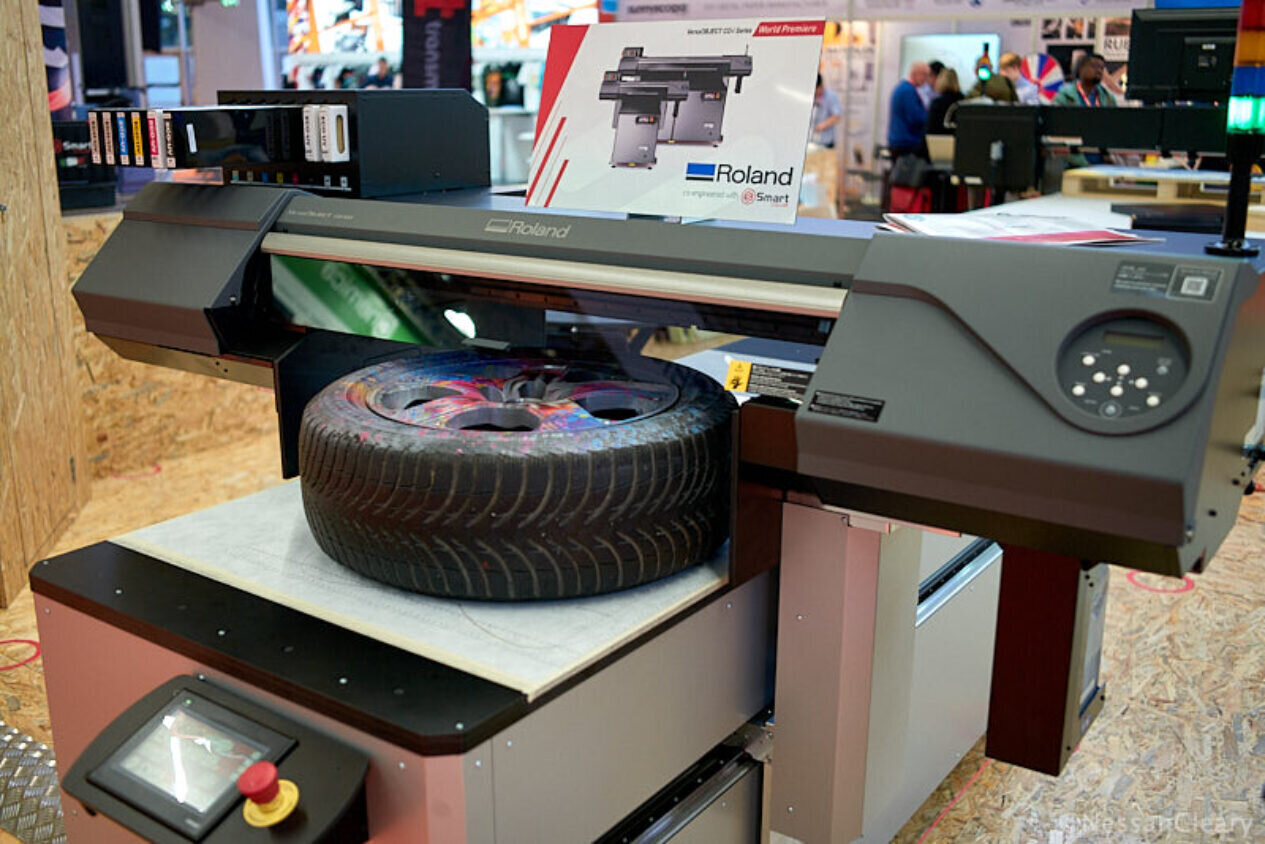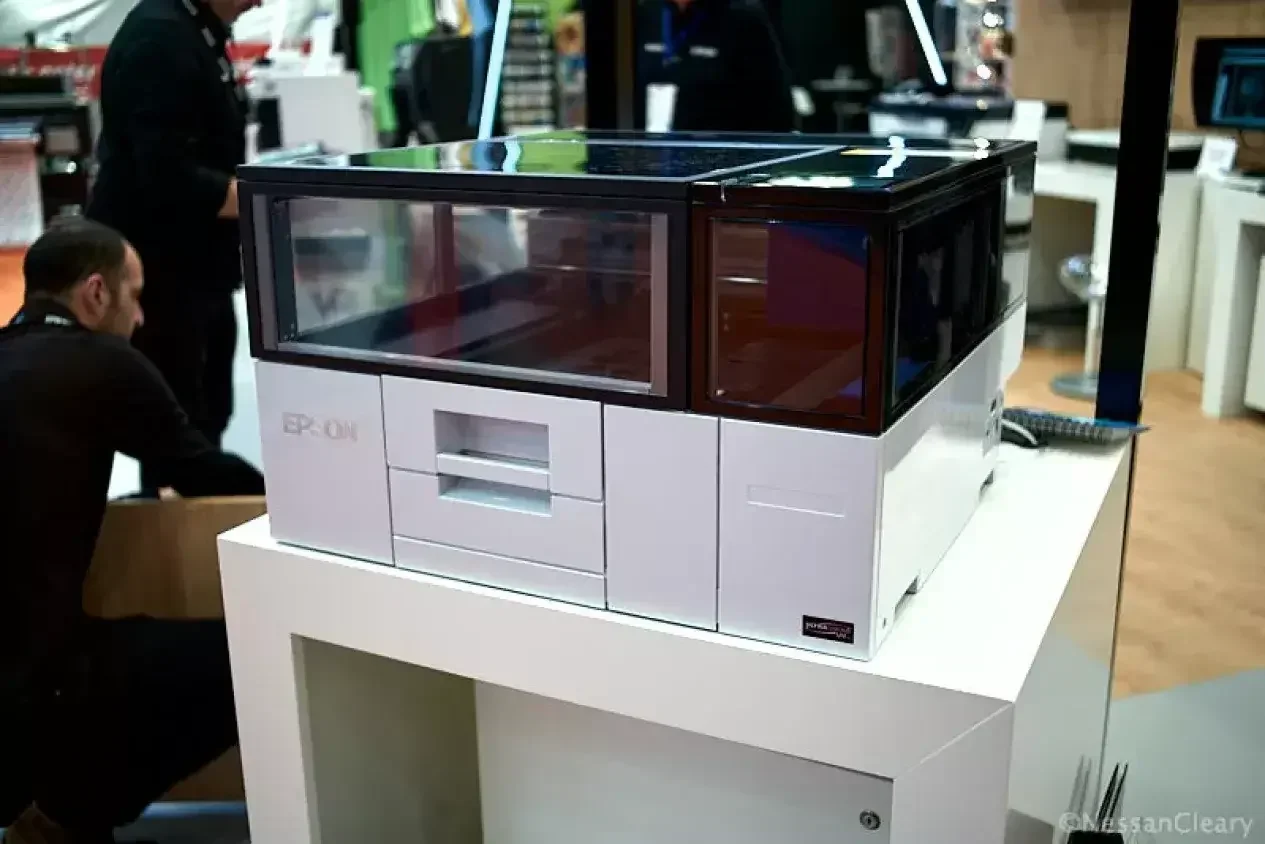
Nessan Cleary discuss how using flatbeds can offer an inexpensive way to diversify into the growing Direct to Object market. Printing objects can offer new applications in promotional goods and industrial items.
There is a huge and growing market in decorating objects, both for consumer – mainly promotional – and industrial use such as switch panels. This has typically been done with pad or screen printing but inkjet gives many more options for variations. That could mean short to medium runs for customisation or even personalisation down to single units. Consequently, there are a number of more specialised flatbeds that are aimed at the growing Direct-to-Object market.
The DtO market is not particularly well defined and involves printing to a range of different sized and shaped objects from smart phone cases to bottles. This creates a huge problem for the printer vendors, since it makes much better business sense to develop one printer that can handle many different objects. However, with inkjet technology the optimum print quality usually depends on keeping the printheads quite close to the object surface, which is much easier to do if you know precisely which objects you’re printing to.
Most flatbeds struggle with curved or cylindrical objects as the curvature increases the distance that the ink drops have to travel from the printhead to the surface, which can lead to poorer image quality. So before buying one of these machines, it’s best to check the degree of curvature a particular machine can handle, to determine how this will limit any potential applications you might be considering.
Some vendors offer a jig for turning cylindrical objects, such as water bottles. This is a good option for the occasional job but will impact overall productivity. There are dedicated printers for printing to cylindrical objects, which should also be able to handle tapered objects. These will hold a limited range of different sized objects, mainly because of the need to keep the printheads reasonably close to the surface of the object.
It’s very difficult to gauge the productivity of these printers. The vendors will quote the print speed for their devices but it will depend on how many objects you are printing to and their overall size. Also, you have to factor in the time taken to load and unload the objects. However, whereas most of these printers tend to be small table top models, some vendors have introduced bigger models, which can handle larger objects and offer much greater productivity.
Just about all of these printers use UV ink with LED curing, which can print textured effects for a more tactile experience. Naturally, most vendors will offer a general purpose inkset that’s suitable for many different applications. These will mostly include white ink, though varnish may be optional. Some vendors also offer primers for working with different materials.
Some applications will have specific characteristics that have to be taken into account. That might mean scratch resistance, or more flexibility, or washability. For this reason, most vendors will offer a choice of inks but of course once the printer is set up with a more specialised inkset, then it will be limited to just those applications.
What’s available?
Mimaki was one of the first companies to recognise the potential for this class of printer and sells several small format flatbeds for the industrial and DtO markets. The largest of these is the UJF-7151plus, which has a maximum print size of 510 x 710mm, and will take objects up to 153mm in height. Mimaki offers an optional Kebab unit for use with all of its industrial printers that can take cylindrical objects and rotate them to print all around the surface. Mimaki has overhauled the internal control systems of these printers so that they can be integrated into industrial production lines, for example, with robotic loading and unloading.
This Mutoh XpertJet 1462UF has an A1-sized bed and is seen here decorating sunglasses
Image credit: Nessan Cleary

Mutoh makes a number of A2+ and A3+ desktop flatbeds for the DtO market but has also picked up on the trend towards larger models that will also compete against screen printers. Thus the latest model is the XpertJet 1462UF, which has a bed of 1470 x 740mm, which roughly equates to A1+ size and can handle objects up to 150mm in height. It has two printheads, each with four channels. The first head printing CMYK followed by the second, which lays down white and varnish. The varnish can be built up to create textured effects as well as for printing braille characters. The maximum resolution is 1440 dpi. As a rough guide, it can print 81 iPhone 14 cases on one bed, and can do this in under 15 minutes.
This Roland VersaObject CO-300 can be used to large objects like this tyre hub.
Image credit: Nessan Cleary.

Roland DG used this year’s Fespa show to launch a number of new DtO printers, including the VersaObject CO-i series of flatbeds. These can print to objects up to 242mm in height and 100 kg/sqm in weight. They are said to be able to print to slightly curved objects such as footballs. There are five models in all, with sizes ranging from 762mm to 1625mm wide. Print resolution is up to 1440 dpi, with LED UV curing. There are eight ink channels, with a choice of CMYK plus red and orange with either white, gloss or primer.
The American company Inkcups makes a number of DtO printers, including the X5 series of flatbeds. This prints CMYK plus white and there’s an optional varnish. It offers 1200 dpi resolution, with a print bed of 1100 x 610mm for objects up to 150mm in height. A variant of this, the X5-T, will take tall objects up to 500mm high. There’s also the XJet Switch, a UV printer that’s specifically designed to print to tote bags and backpacks.
Azon sells a number of small format UV printers, including the Matrix UV, which is available in four sizes. The largest has a bed size of 1100 x 2500mm and they can all handle objects up to 20cm in height. There’s a primer available for glass, ceramic and metals. There’s also an optional rotary device to print to cylindrical objects. Azon also sells a larger model, the Matrix Monster Jet, which can print to objects up to 1m in height, and has been demonstrated at Fespa shows decorating suitcases and even washing machines.
This Epson V1000 has been designed as a counter-top printer for decorating small objects.
Image credit: Nessan Cleary

Epson has gone the other way, creating a very small printer, the SureColor V1000, that’s designed to sit on a counter in a retail environment. It has an A4-sized platen and can print to small items such as fridge magnets or decorating objects like golf balls. It will take objects up to 70mm high and print to various materials including polycarbonates, aluminium, wood and stone.
In conclusion, these small flatbeds offer a relatively inexpensive way to diversify into the growing DtO market. There’s a good range of printers available, with different sizes and price points, so that print shops should be able to find one that ties in with their existing business model and client base.
To discover the latest content that covers a wide range of sectors including digital printing, screen printing, inks and personalisation sign up for FESPA’s free monthly newsletter FESPA World available in English, Spanish and German.